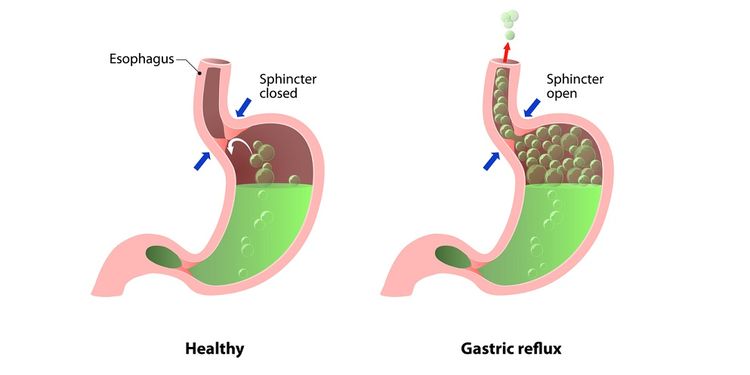How I Figured Out I Had Low Stomach Acid And Fixed It

When you eat a meal, your stomach produces acid (especially hydrochloric acid) and enzymes to start breaking the food down. That way, when it enters your small intestine, you can absorb the nutrients and amino acids your body needs. You want just the right amount of acid to do this job. If you consistently have too much or too little, you’ll experience all kinds of unpleasant symptoms. When this happens, you have to take proactive steps to figure out what’s going on and how to address it. Here’s how it went with me.
Hitting a New Low
I had never experienced any serious digestive problems before, so when I started consistently feeling indigestion, heartburn, and acid reflux, I was not a happy camper. It made eating a lot less pleasurable knowing what would come afterwards. Like most people, I just assumed my problem was too much acid.
It seemed logical, right? If acid is coming back up my esophagus, it must mean there’s too much of it. I started taking Tums on a regular basis and even tried a couple of the OTC acid reflux remedies, but they didn’t help. In fact, it seemed like the problem was getting worse. That’s when I started looking into stomach acid issues in general.
What I discovered was downright eye-opening. As it turns out, if you’re experiencing the symptoms I described, it could be due to either high or low stomach acid!

The official term for low stomach acid is hypochlorhydria. If your stomach isn’t producing enough acid, then the food you consume doesn’t get broken down enough before it enters your small intestine. When this food isn’t digested enough, it becomes the perfect breeding ground for bacteria, resulting in a condition called SIBO (small intestinal bacterial overgrowth).
All that extra bacteria causes the production of lots of gas. When you combine the extra gas with an increased amount of inadequately digested food that takes longer to move along, things basically get backed up.
The backup puts pressure on the esophageal sphincter, which is the muscled ring that allows food to go down into your stomach and keeps the contents of your stomach from going back up. The pressure can force acids and other stuff back up into your esophagus, and that’s when you start feeling the indigestion, heartburn, and acid reflux.
This was all new to me, so I wanted to know for sure if my problem was high acid or low acid. The official medical test for low stomach acid is the Heidelberg Stomach Acid Test. The problem is that it’s very invasive, costs at least several hundred dollars, and is rarely covered by insurance.

Instead, to at least get an initial indication of whether or not I had low stomach acid, I did a very simple self-administered baking soda test. The way this works is that when you first get up in the morning, before eating or drinking anything, you put a quarter teaspoon of baking soda in 4-6 ounces of cold water and drink it. What this test does is create a chemical reaction between the baking soda and the hydrochloric acid in your stomach.
The reaction produces carbon dioxide. If you have adequate stomach acid, you should experience some robust belching within a few minutes. If five minutes pass without a substantial burp, you might have low stomach acid. Notice I used the word “might.” There’s no guarantee you’re getting accurate results with this test, but if you repeat it several days in a row and get the same results (no serious belching within five minutes), you may very well have low stomach acid.
In the case of several positive baking soda test results, it would be worth your while to either get the Heidelberg test to know for sure or do another home test called the Betaine HCL Challenge test. (If you’re taking NSAIDs or corticosteroids, ask your doctor before doing this one, because it could put you at greater risk for gastritis.)

The Betaine HCL Challenge test will cost you about $20, because you have to purchase Betaine HCL supplements. You want pills that are 650mg or less that also include Pepsin. Arrange for a high-protein meal that involves at least six ounces of meat. In the middle of the meal, take one Betaine HCL pill. Finish your meal normally and go about your day, but pay close attention to your body.
If you start to feel stomach stress, such as heaviness, warmth, or even burning, then you can breathe a sigh of relief, because those all indicate you do not have low stomach acid.
If, on the other hand, you don’t feel anything out of the ordinary, then you probably do have low stomach acid. If you get results indicating low stomach acid after two repetitions of the test, it’s time to start addressing your low stomach acid issue.
Personally, I did the baking soda test for a whole week and got the same results every time. I didn’t feel the need to go on to the other tests. I felt like my gut was literally telling me I had low acid, so I started looking around for solutions.

Treating a Tricky Tummy
If you’ve already purchased a Betaine HCL supplement with Pepsin, taking that on a regular basis is one of the quickest ways to “reset” your digestive system. It’s basically adding in more hydrochloric acid since your stomach isn’t producing enough. The idea is that it will help you retrain your stomach to get to the right level of acid.
But you also have to do this just right. It’s best to talk it over with your doctor, but you can also start off gently with just one capsule at a meal that involves protein. If you’re not going to get a substantial amount of protein in a meal, don’t take the supplement.
If you’d like to try something more natural before committing to the Betaine HCL supplement, try apple cider vinegar with digestive bitters and digestive enzymes. Take a tablespoon of apple cider vinegar, add a little water, put in the recommended amount of digestive bitters in tincture form, and take one or two capsules of digestive enzymes before you eat a meal.

Another thing you can do to help the situation resolve itself is take a teaspoon of Manuka honey once or twice a day. This is a special kind of honey from New Zealand that has strong antimicrobial properties that will help address any SIBO you may be experiencing. In general, you need to make sure you’re thoroughly chewing your food (around 30 chews for each bite). Also, eat smaller meals to give your digestive system some space to heal itself.
My particular version of low stomach acid must not have been too serious, because all I did was use the apple cider vinegar on its own for several weeks.

Finally Fixed
My symptoms slowly subsided over the weeks I took apple cider vinegar before every meal, and they haven’t returned since. What a relief it was to have all the reflux and discomfort finally go away! It’s impossible to enjoy meals when you know you’re going to feel awful afterwards.
Low stomach acid has been linked to aging, adrenal fatigue, alcohol consumption, bacterial infection, chronic stress, and various medications, and the main one of those that applied to me at the time was stress.
The lesson here is clear: if you’re experiencing digestive issues such as heartburn and acid reflux, you can take a proactive approach to try and figure out what’s going on, then address it. You’ll feel so much better if you do!
